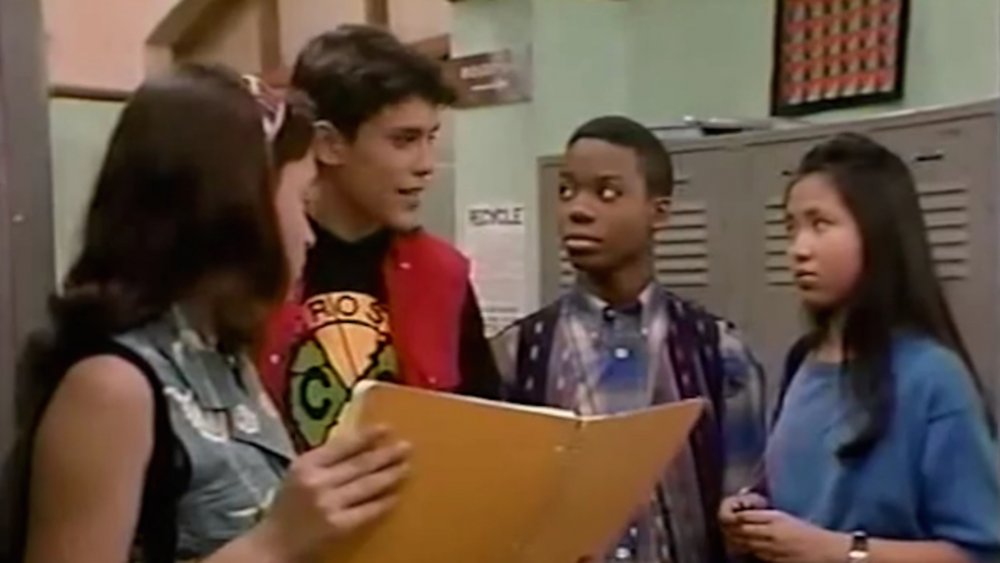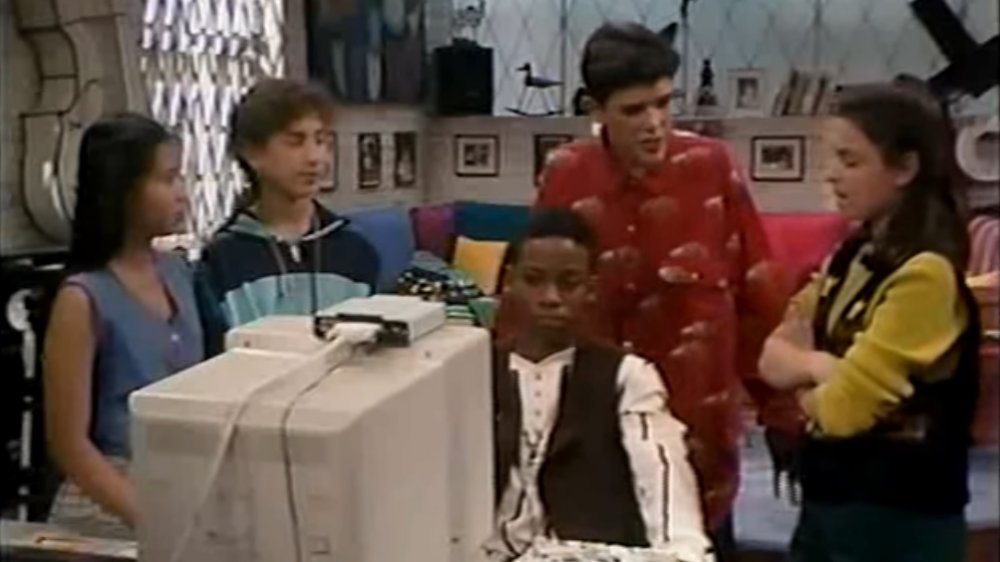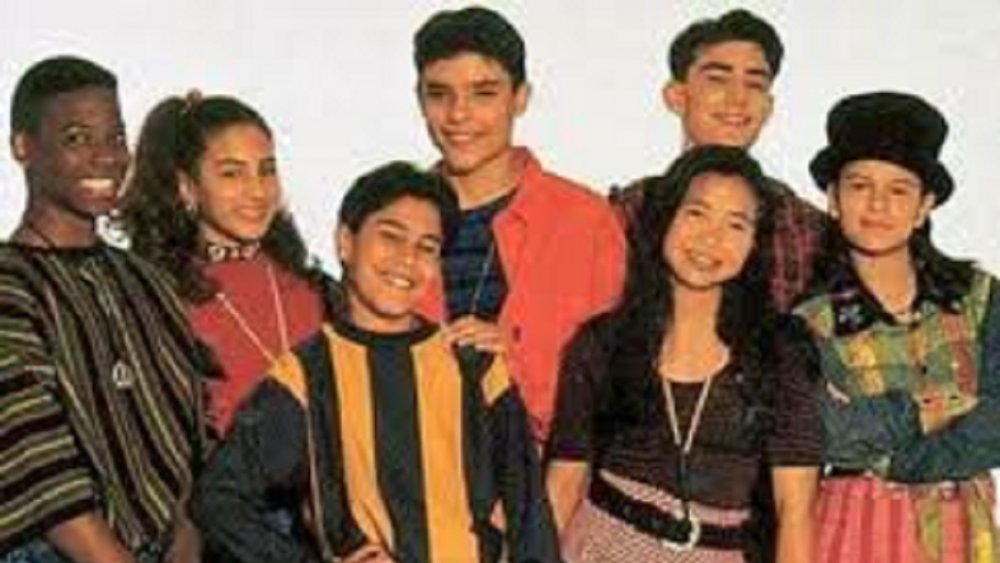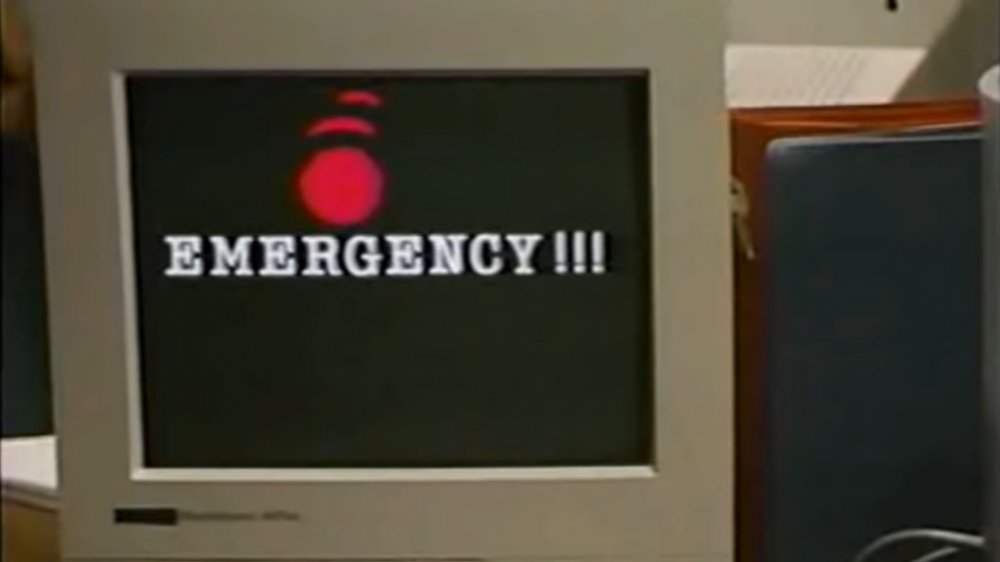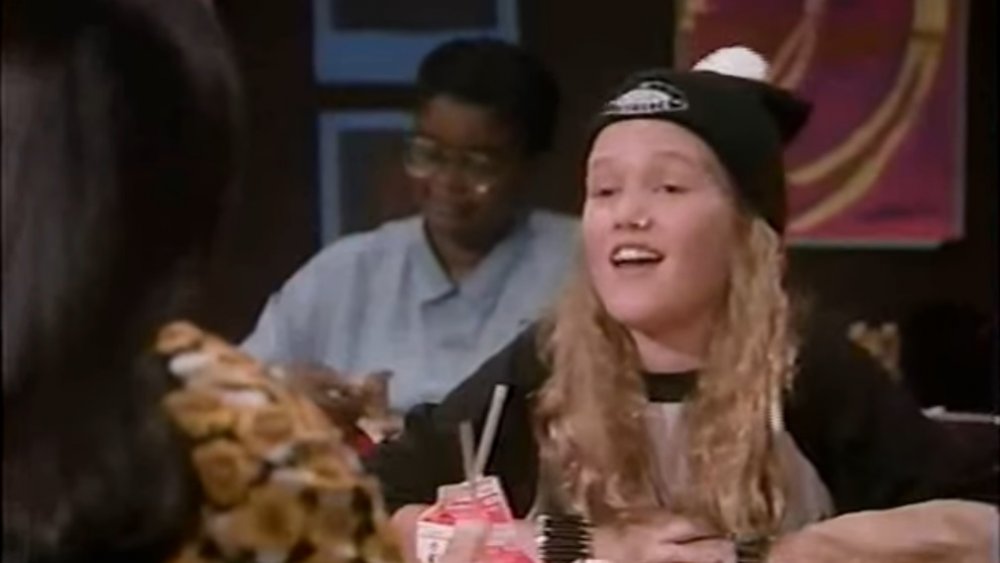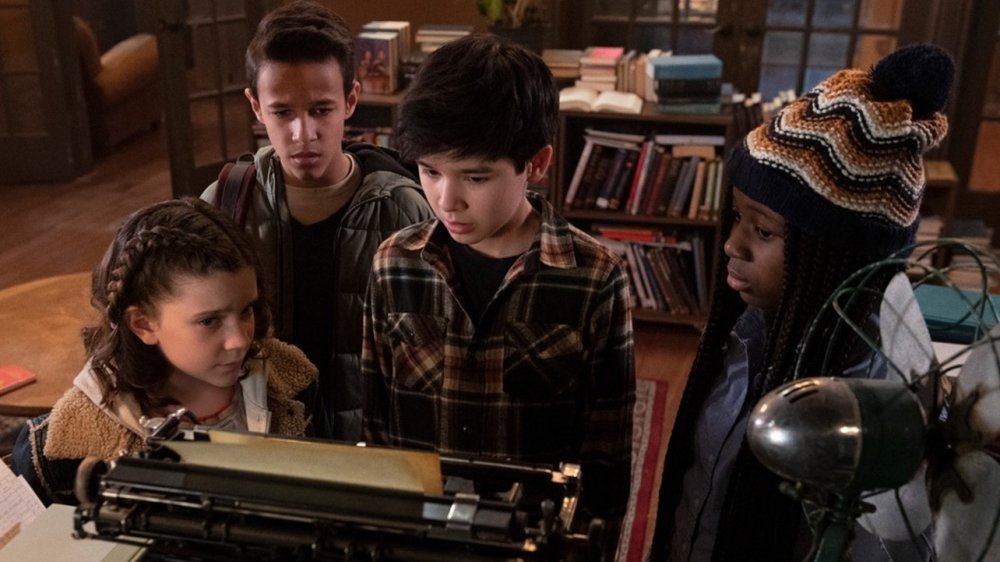Things We Forgot About Ghostwriter
It's hard for a kid's show focused on education and life lessons to stand out in the sea of television content, but many people from that target audience remember Ghostwriter. It was a show that offered the elementary and middle school crowd something different at the time: a live-action program broken into multi-episode stories that brought in drama and saw a group of kids solving cases in their community with the help of a dead friend.
The visuals and music were fresh, with Miranda Barry, the show's supervising producer, referring to the graphics used to bring Ghostwriter to life as "bleeding edge." Many of the stories were important and rooted in real conflict, dealing with some fantastical issues, while still feeling possible and relevant for the viewers. The episodes were shot on location in Brooklyn when possible and starred kids who weren't traditionally trained actors, giving the show a natural aesthetic.
Running from 1992-1995 on PBS and BBC Two in the UK, Ghostwriter's 74 episodes were broken up into three seasons. The show was created by the Children's Television Workshop (now the Sesame Workshop) — the group behind Sesame Street — and the production team was staffed with many veterans of the small screen, including several from MTV. They wanted to create something special, and as evidenced by Apple's Ghostwriter reboot, they succeeded. Here's everything we forgot about the original Ghostwriter.
Ghostwriter and his stories
Each arc of Ghostwriter was set up as a four or five-episode story where the team would discover a mystery and work together to collect clues, interview suspects, and crack the case by using words and basic problem-solving skills. Their secret weapon is Ghostwriter, an entity that can read anything and search the city for specific words while acting as the groups' pre-mobile phone messaging system to help rally everyone together when needed.
The titular character is a phantom punctuation mark who is released from an old book in Jamal's basement when he and his dad are moving a trunk. Ghostwriter reveals himself to the kids one by one over time, as not everyone can see him (only one adult ever notices him, in the "Just in Time" arc, but they had seen Ghostwriter as a child). The kids agree not to tell anyone else about their friend, letting Ghostwriter reveal himself to all new trusted members of the team first. Ghostwriter proves he's a well-meaning soul, in instances like when Alex wants him to give the group answers on tests, but is told cheating is wrong.
When he does first appear, he oddly calls them "my children" and is worried that they are in danger. Some clues are given about his age and where he's from, even though Ghostwriter seems to have amnesia. As the show progresses, he seems to relax a bit, even wanting to be in a music video and horror story. Ghostwriter can't see images, only read and communicate through words, but he is able to sense strong emotions coming from the children on occasion and tell what they want. The strangest part may be his ability to travel through time and space when the plots called for it.
Although the show never fully explained the ghost's entire story, producer and writer Kermit Frazier spoke about it in a 2010 interview, revealing that Ghostwriter was the spirit of a runaway slave from the Civil War period who spent his life teaching other slaves how to read and write. The book that Jamal knocked over had kept his soul dormant until it was disturbed. Whoever Ghostwriter was in life, he was killed by slave catchers and their dogs, which was hinted at in a few episodes when the spirit is seen being apprehensive around canines. Although he is the character with the craziest backstory and lynchpin of the group — not to mention the reason why the team was effective in the first place — the kids are the real life of the show.
The coolest cast
Ghostwriter features a diverse group of kids, some of who speak various languages and share elements from their cultures, which feels very progressive for the early '90s. Each of them has a good personality that developed over time, so even if some of the acting was a bit wooden early on, the characters were likable and helped drive the stories. The show had two main writers, one who focused on the cases and another that put their skills toward making sure the characters would be identifiable to the kids watching it.
The main cast was headed up by Jamal Jenkins (Sheldon Turnipseed), Lenni Frazier (Blaze Berdahl, who was Ellie Creed in Pet Sematary), Alex Fernández (David López), Tina Nguyen (Tram-Anh Tran), and Gaby Fernández (Mayteana Morales'92-'94 and Melissa Gonzalez '94-'95) with several supporting adult characters, but the top-billed was CeCe Jenkins (Marcella Lowery). Other kids would help round out the team at different times, like Rob Baker (Todd Alexander Cohen), Héctor Carrero (William Hernandez), and Casey Austin (Lateaka Vinson), as well as a few who only joined for one case.
These young stars in the making were specifically selected because they weren't actors and spoke like regular people. Thankfully, this thrown-together group developed solid chemistry. There are some obvious relationships in the show, like how Alex starts off liking Tina, Jamal is after Jasmine, and we see Lenni flirting with Tina's brother Tuan in season three. It looks as though the actors had fun with many of the episodes and they were given the chance to interact with plenty of other interesting characters.
Ghostwriter's setting and tone
The Ghostwriter team feels like a group of real inner-city kids, largely in part to the show filming on location when possible. The neighborhood of Fort Greene, Brooklyn is the central location for most of the mysteries, and the city feels alive as the junior sleuths tail suspects through the streets. The interior shots were done mostly on a sound stage, but there were plenty of spots to investigate when not rallying at one of the groups' living spaces or the school.
Ghostwriter had an interesting filming style that looked less like most other live-action kids shows of the time and more like a drama, having play-like elements. The editing still fit the time period — quick and shaky with abrupt cuts — while the fashion screamed that same '90s vibe. There were some goofy moments in the sound department to balance out the other atmospheric elements, like the wacky sounds when Jamal does his karate moves.
The tone of the show has its dark and serious moments. When Ghostwriter first shows up he's coming across the computer with things like "Help, Help, Where are the children? Are they all right?" and yelling "ANSWER ME!" repeatedly. His initial contact is a bit spooky and each kid seems a bit freaked out when they first experience him writing to them. There is, of course, a huge theme of mystery, with Alex even reading novels of the genre when the audience first sees him. There are tough themes that are discussed intertwined with the main stories, like dead parents, bullies, alcoholism, drugs, the homeless, kidnapping, and PTSD. The team also gets put in jeopardy at times, with Jamal almost being arrested, Lenni nearly being blamed for hacking school records, and Rob being punched by gang members and knocked unconscious by a villain.
Ghostwriter guest stars
Each new case needs fresh suspects, red herrings, and more friendly faces. The show used these television personalities well, whether it was for a full arc or just as cameos, and there were a ton of stars that viewers probably forgot about. Most will remember Samuel L. Jackson in the first two arcs as Jamal's father and Julia Stiles, who debuted in 1993 for a couple of cases as a hip hacker in "Who is Max Mouse."
Some recognizable names that were part of full episode sets included Jeremy Miller (Growing Pains), who was a pivotal figure in the second case and even saw Ghostwriter at the end. David Patrick Kelly (The Warriors) played the veteran and street poet Double T, while Greg Lee (the host of Where in the World is Carmen Sandiego) acted the fool as one of the kids' teachers. Robin Leach (Lifestyles of the Rich and Famous) made his mark as a vindictive music mogul, Judge Reinhold appeared as a suspect who chased the kids around the school, while Max Wright (ALF) played a perfect foil as Mr. Brinker.
Many short but fun cameos go to Daisy Fuentes as Galaxy Girl, Lou Albano (WWF, Super Mario Bros. Super Show) as a cabbie, a young Dulé Hill (The West Wing, Psych) appearing in one episode to play basketball, Bo Jackson as a security guard, Spike Lee as a special agent, the group Salt-N-Pepa, Ed Lover, and Dr. Dre, and finally Mark Linn-Baker (Perfect Strangers) in the final episode of "Ghost Story" as a police officer making the big arrest. As the show's popularity grew, a lot of people wanted in.
Ghostwriter's edutainment value
Making a show focused on education isn't easy, but Ghostwriter was up for the challenge. It didn't stop there, though — the program was integrated to be a multi-media project that featured magazines, software, videos, games, and other materials, like teacher's guides. That's all before we even mention the novels starring the popular characters from Bantam Books that offered up new stories as well as adapted versions of cases from the show. It isn't hard to see that Ghostwriter had a large reach and encouraged a ton of kids to read and write.
The episode structure itself was meant to teach young viewers about storytelling, arcs, and to keep them interested and coming back to learn more. Each new episode started with a recap to catch everyone up and urged viewers to grab pencils and their casebooks to play along and help solve the mystery. There was a focus on using the tools available to you and in many cases, technology at the time, like where Jamal explains how modems work. Ghostwriter is often seen possessing computers to speak to the kids and even learns how to travel through the phone lines to access the web.
Problem-solving skills were heavily encouraged, but it also taught kids how to use resources, be concise, and how to create storyboards for videos and comics, just to name a few. It was versatile, even covering something like dealing with rejection letters, offering up small life lessons to round out the education. The first case involved coded messages — scrambling and letters to numbers. The show also pointed out when the kids wanted to be lazy with their work, even if they were all guilty of treating Ghostwriter as a pre-Google reading assistant numerous times.
The Ghostwriter legacy
Ghostwriter is often compared to other shows in its genre like Reading Rainbow, but certain arcs like "Ghost Story," "Who Burned Mr. Brinker's Store," and "Who is Max Mouse" line it up with other programs outside of the genre. A few fans even rank it up there with the greats like Are You Afraid of the Dark. Ghostwriter aired in syndication on various networks until 2003 and was released on VHS and DVD; today, the episodes are available on YouTube for those who want to relive the adventures.
1997 saw CBS try their hand at releasing The New Ghostwriter Mysteries, but very little carried over from the previous show. The team was trimmed down to three members, Ghostwriter himself was changed, the long-running multi-episode arcs were gone, and it was canceled after only one season. BBC School Radio revived the property in 2006 as a radio drama, one that stayed much closer to the material from the original show. More recently, Apple relaunched the series on their streaming service. Ghostwriter never truly went away — it was even spoofed on an episode of Robot Chicken.
It's amazing how many people remember their friend Ghostwriter, and knowing that a new generation is now experiencing the mystery is reassuring. There's still something about the original — a fun, well-made show that strived to do more than just teach. No one should be afraid to rally back to this gem.
